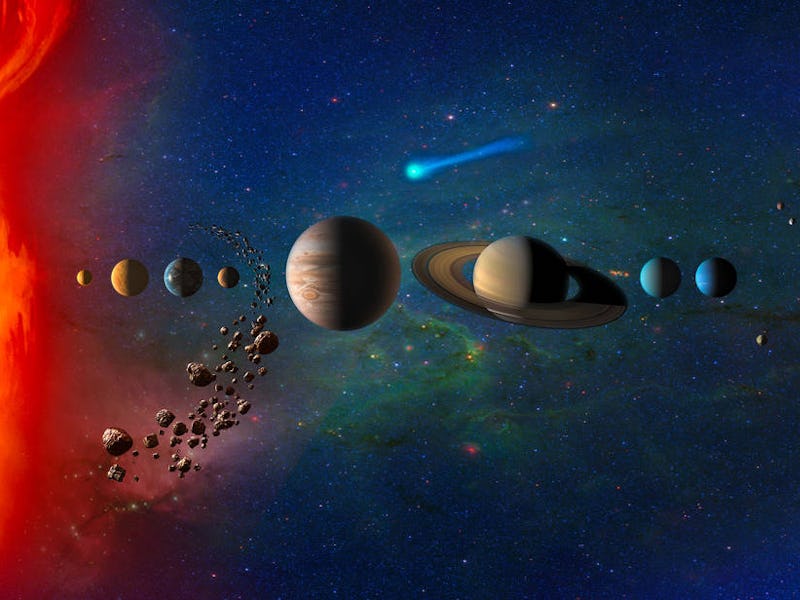NASA eyes trips to Venus, Io, and Triton: From hellish to tame
The proposed missions will unlock mysteries of the Solar System.

With robots roaming Mars, a spacecraft staring down at the Sun and twin spacecraft that have been feeding information about interstellar space for more than 40 years, NASA has close to 70 missions in operation today.
But the universe offers more questions than answers, and there’s still a lot more to explore.
In preparation for new and upcoming missions that cover areas which are not currently being observed by other missions, NASA has selected four proposals on Thursday. The proposed missions cover Venus, Jupiter’s moon Io and the icy moon of Neptune, Triton.
Thomas Zurbuchen, associate administrator of NASA's Science Mission Directorate, believes the ideas can give us a better understanding of our cosmic surroundings.
"These selected missions have the potential to transform our understanding of some of the solar system’s most active and complex worlds,” Zurbuchen said in a statement. “Exploring any one of these celestial bodies will help unlock the secrets of how it, and others like it, came to be in the cosmos.”
Each team of researchers behind the four proposals will receive $3 million to develop their concept, and NASA will select up to two missions in the year 2021 to take their ideas off the ground.
The most daring missions will plunge straight into a hellish, volcanic world, while others will explore the strange accompanying moons to our Solar System's giant planets.
Below is a list of the four proposed missions, from the wildest one to the relatively tame.
DAVINCI+ (Deep Atmosphere Venus Investigation of Noble gases, Chemistry, and Imaging Plus)
Venus is often referred to as Earth’s hot, older sister. Venus is the second closest planet to the Sun, but it is the hottest planet in our Solar System because of its dense atmosphere that traps heat the same way greenhouse gases do on Earth. Venus’ atmosphere is mostly made up of carbon dioxide, and its surface is extremely dry. Therefore, Venus often serves as a reminder of Earth’s eerie future.
Venus is Earth's twin, or its post apocalyptic future.
This hellish world isn’t exactly inviting to spacecraft. The last U.S.-led mission to Venus that measured its environment was Pioneer Venus 2, which launched in 1978. Otherwise, spacecraft have flown by Venus from a distance, or worse, used it as a gravity assist to visit other worlds.
DAVINCI+ will plunge right into the hellish world of Venus in order to analyze its atmosphere, and determine whether or not the planet ever had an ocean. The spacecraft’s instrument will be hidden inside a purpose-built descent sphere in order to protect them from the intense radiation emitting from the planet.
The mission will also snap some images of Venus in order to map its surface.
VERITAS (Venus Emissivity, Radio Science, InSAR, Topography, and Spectroscopy)
Speaking of Venus, this proposed mission also wants to explore this distant, hellish world. VERITAS aims to map Venu’s surface in order to get a better idea of the planet’s geological history and determine why Venus grew to be so different than Earth even though they are both around the same size, mass and density.
VERITAS will chart the surface elevation of the entire planet and create three-dimensional reconstructions of its topography. Scientists behind this proposal are hoping to confirm whether plate tectonics and volcanism is still active on Venus.
Io Volcano Observer (IVO)
Jupiter has 79 moons that we know of, but perhaps none are as popular as Io. Io is the most volcanically active body in our Solar System, with hundreds of volcanoes spouting lava as far as dozens of miles away.
Jupiter's strong gravitational pull rules the activity on its largest moon.
Io’s activity is ruled by the gravitational tug of Jupiter, as well as from its two neighboring moons Europa and Ganymede.
IVO will explore this strange phenomenon on Io in order to understand how tidal forces shape planetary bodies over time. The results from the mission could offer new insights into how rocky, icy ocean planets form in the Solar System.
TRIDENT
Triton was the first moon discovered orbiting around Neptune, and it is the planet’s largest moon out of a total of 13. Another thing that makes this moon so special is that it orbits in the opposite direction against its host planet, a retrograde orbit.
The proposed Trident spacecraft would fly by Triton once, mapping the moon and characterizing its active processes. Triton has an ionosphere capable of creating organic snow, and could possibly have an ocean beneath its surface, therefore studying it could provide scientists with insight on how potentially habitable worlds develop in the Solar System.